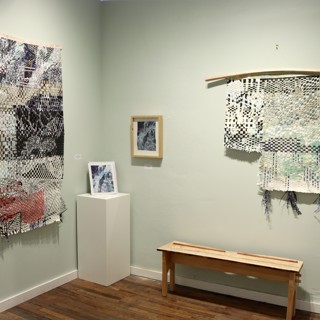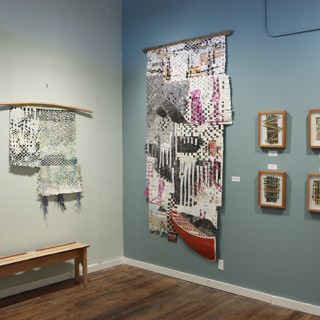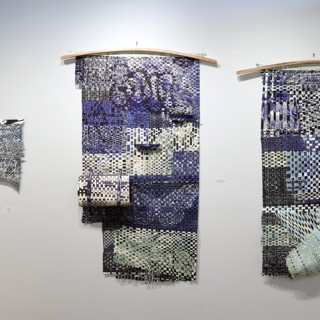Born and raised near Lake Michigan and having spent most of her adult life near New York's East River and Harbor, multidisciplinary artist Hilary Lorenz feels a profound connection to the element of water. “Water represents movement, mystery, and life,” Lorenz says. “I find myself continually drawn to it, whether in a river, a waterfall, or the simple act of floating.”
A move to rural New Mexico, a landscape “marked by drought and dry arroyos,” added layers of complexity to this connection. Lorenz constantly explores the contrast between water and drought through her work, embracing the tension between the two and finding beauty in both. “The vast expanse of the desert offers its beauty, but I can't help but feel the pull of the water,” Lorenz says.


In Drifting Toward a Distant Anchor, Lorenz continues to explore the relationship between water, place, and personal connection. Her work blends past and present, with archival prints and drawings woven together with newly gathered materials. Her combination of cyanotypes, linocut prints, marbling, and paper weaving reflects the ongoing interplay between time, place, and change.
Over the past two years and multiple artist residencies, Lorenz has continued to add to her visual library. In New Hampshire, she used water from the Merrimack River and sunlight to expose cyanotypes of native plants, from which she created large-scale weavings combined with linocut prints and lithographs. A residency at the TIDES Institute & Museum of Art in Eastport, Maine deepened her connection to water and place, bringing themes of travel, movement, and longing into sharper focus, and allowed her to explore the power of water by working with local materials and weaving linocut-printed canoes, slices of moths, and marbled papers soaked in water from Passamaquoddy Bay.
Since Lorenz built her first canoe in a Brooklyn apartment, the canoe has become a key symbol in her work, embodying her love of craftsmanship and her desire to explore. “The canoe is something I can build, carry, and launch without assistance, providing both physical and emotional freedom,” Lorenz says. “For me, the canoe is a simple yet powerful structure representing exploration and the capacity to carry more than just myself on my journey—it offers me a way to go farther, travel across water, and transport more, just as I seek to transport my emotions, memories, and experiences through my work.”
Drifting Toward a Distant Anchor includes a water-worthy paper canoe that represents Lorenz’s ongoing search for connection: “an exploration of both the freedom of movement and the limitations of my environment.” The bow is covered in linocut-printed hawk moths, and the stern with hand-marbled paper using the Chama river water to float the ink.


The moth is another recurring motif in Lorenz’s work, a symbol of migration, community, and transformation. She founded the Moth Migration Project in 2017, a project crowdsourcing over 20,000 hand-printed paper moths created by people from 28 countries. These moths, which Lorenz now weaves into her paper artworks, symbolize the global networks she’s built through art and collaboration, representing both the beauty of connection and the complex issues surrounding migration. “These moths cross geographical and emotional boundaries, boundaries many of us cross when seeking new communities and a place we can call home,” Lorenz says.
Her journey over the past two years has raised numerous questions: How do I build community in an unfamiliar place? What does it mean to be at home in a constantly changing landscape? How do I carry my past experiences into new environments? Drifting Toward a Distant Anchor explores these questions as she searches for connection, stability, and belonging. “It's about how I weave together the threads of my experiences, communities, and landscapes to find meaning in the spaces I occupy,” Lorenz says. “It is a testament to the power of water, the importance of human connection, and the ongoing search for home.” Drifting Toward a Distant Anchor will open at Hecho a Mano on Friday, May 2 and will be on view until June 2, 2025.
